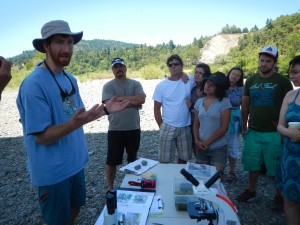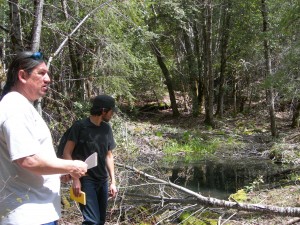Regional partners along the California North Coast
Angelo researchers are grateful for local and regional partners who share our interests of understanding the past, current, and future states of watersheds along the North Coast watersheds. Like some of our partners but not others, Angelo researchers do not take advocacy positions. We want to become well-informed about societal and environmental concerns along the North Coast and help shed light on the consequences of various choices or policies for people and nature.
Eel River Recovery Project
In 2011, Eel River citizens concerned about diminishing flows, recovery of salmonids, and recent toxic algal blooms in the Eel River formed the Eel River Recovery Project (ERRP), with Patrick Higgins as its Volunteer Coordinator. Keith Bouma-Gregson, studying cyanobacteria for his dissertation at Berkeley, reached out to ERRP, starting a wonderful partnership.
Angelo researchers have benefited from (and assisted with) ERRP’s extensive monitoring of temperature, channel condition, and fish, which ERRP volunteers have freely shared with their partners. In turn, Angelinos participate in ERRP events. Mary Power, Sarah Kupferberg, and Bill Dietrich have given talks at the Willits Hub.
Humboldt and Mendocino counties. Keith Bouma-Gregson has given educational talks for ERRP events about cyanobacteria and algae in the Eel, and ERRP in turn has been represented by great participants in our biennial Algal Forays at Angelo, in which we train interested citizens and students to identify algae, distinguishing “the good (algae like diatoms that fuel food webs that support salmonids), the bad (cyanobacteria that have caused dog deaths), and the structural (the green macroalgae that can become overgrown with diatoms or cyanobacteria).

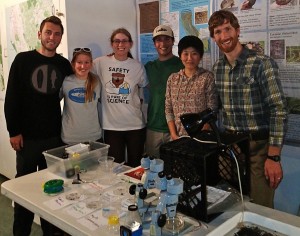
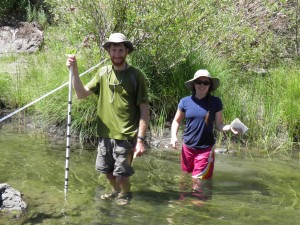

Karuk Tribe
We are very grateful for our exchanges and friendship with members of the Karuk Tribe, the “Fix the Earth” people. Karuk live on their ancestral lands along the middle Klamath River, an amazingly beautiful, diverse, and rugged landscape. The Karuk-Berkeley Collaborative, founded in 2008, has provided many opportunities for Berkeley students and researchers to visit Karuk restoration projects in their ancestral lands, and for us to benefit from their visits to our study sites. Many thanks to Ron Reed, Bill Tripp, Tom Carlson and Jenny Sowerwine for all we have learned and will learn about how tending by Native Californians structured and sustained rivers and forests of the North Coast. Karuk friends, along with Tom Carlson and Jenny Sowerwine, have hosted wonderful field trips for the Ecosystems of California class, and Karuk friends and leaders have visited our Angelo sites. We look forward to more scientific and educational collaboration with Karuk friends, scientists and youth over the years to come.
Berkeley students and faculty are already very actively engaged with Karuk tribal members through the The mission of the Karuk-UC Berkeley Collaborative is “to foster synergistic collaborations between the Karuk Tribe and UC Berkeley, and additional partners working with them, to enhance the eco-cultural revitalization of the people and landscapes within Karuk ancestral lands. Initiatives include facilitating UC Berkeley-Karuk scientific collaborations, helping to facilitate tribal youth leadership in science, and helping to design and conduct studies related to traditional land and cultural resource management.” We are excited to develop these collaborations.
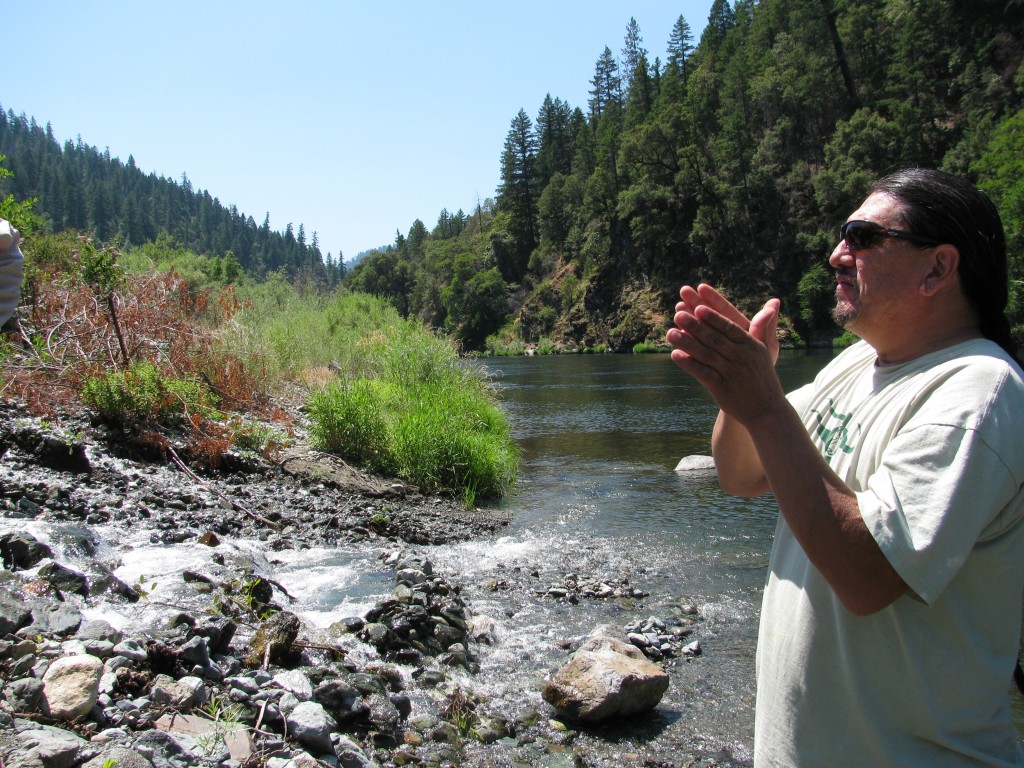
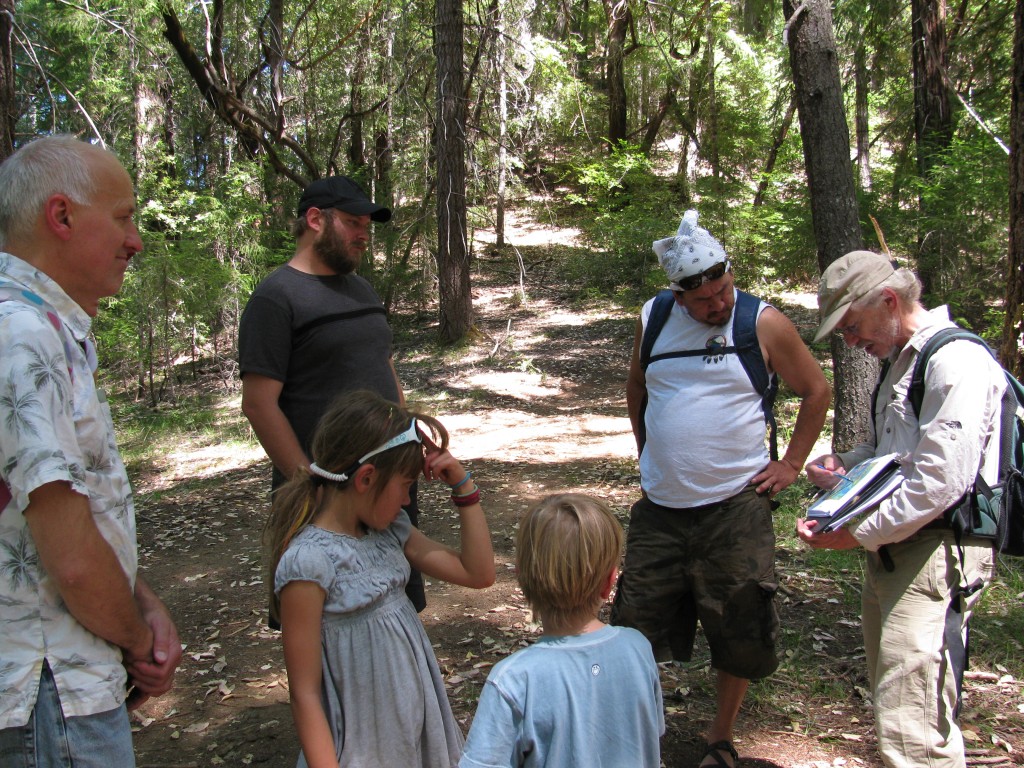
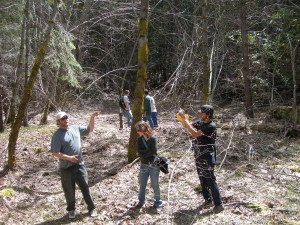

Redwood Forest Foundation, Inc.
“RFFI is a non-profit organization of stakeholders, including loggers, environmentalists, community activists, foresters and others, working together to conserve forest lands and to protect biodiversity, mitigate climate change and improve the local economy in an equitable fashion.” -from the RFFI web site.
Angelo researchers are inspired by the vision of this community-based
forestry group, and applaud their efforts to rehabilitate 50,000 acres of industrially logged redwood forest in the steep Usal basins along the South Fork Eel River, north of the Angelo Coast Range Reserve in Mendocino Co. We admire RFFI’s goal of rehabilitating salmon-bearing rivers and recovering sustainably harvested redwood forests, sustaining both native species and human livelihoods along the North Coast.
Angelo researchers partnered with RFFI in a presentation at an Ecological Society of America Millenium Conference on Water and Social Justice. We have also joined them for discussions on their plans for a new environmental education center near Piercy, and on potential restoration of channels on their lands near the confluence of the North and South Fork Usal, At this site, RFFI is addressing the problem of logging legacies that triggered a landslide into the North Fork Usal channel. The sediment piled up in the channel, blocking summer passage for salmonids, leaving fish to die of heat shortly before the final reach that could convey them to the sea. One restoration hypothesis would be that digging out old anabranching channels–now filled with legacy sediments but still damply apparent, in a wetland shaded by mature alder canopy–could create cool “over-summering habitat” for maturing fish, allowing them to survive until winter floods escort them out of the river into the sea. This is one of several restoration ideas that RFFI and their partners are considering for their site.
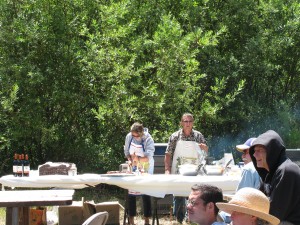
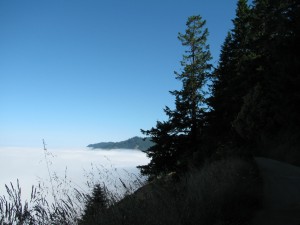
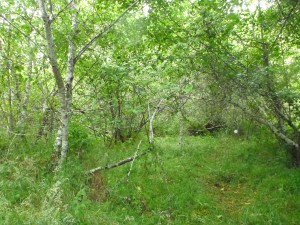

Friends of the Eel River, FOER
- Sarah Kupferberg, Mary Power, and Bill Dietrich presented at Fortuna, 2011
- Angelinos have learned a lot about the Eel and the Russian Rivers from field trips, presentations, and interactions with:
- Eel Russian River Commission
- Mendocino County Farm Bureau
Karuk & RFFI
NCED and HydroWatch scientists collaborate with two citizen groups in northern California seeking to restore and manage forests in a way that increases their ecological resilience and their sustained value for local communities. One partner is the Karuk Tribe, whose ancestral forest practices and current restoration efforts may improve hydrologic cycles, river flows and temperatures for salmonids in the Middle Klamath Basin.
The other partner is Redwood Forest Foundation, Inc. (RFFI), a community based forestry association seeking to rehabilitate 50,000 acres of industrially logged redwood forest in the steep Usal basins along the South Fork Eel River, just north of the Angelo Coast Range Reserve in Mendocino Co. All partners are seeking ways to make forests more resilient to climate change, improve salmon bearing rivers and increase the productivity of redwood forests, so that these iconic North Coast ecosystems sustain both native species and, where harvested, livelihoods for local human communities.
Websites

Redwood Forest Foundation, Inc.
University Partners
Berkeley Initiative in Global Change Biology (BIGCB)
University of California Natural Reserve System
